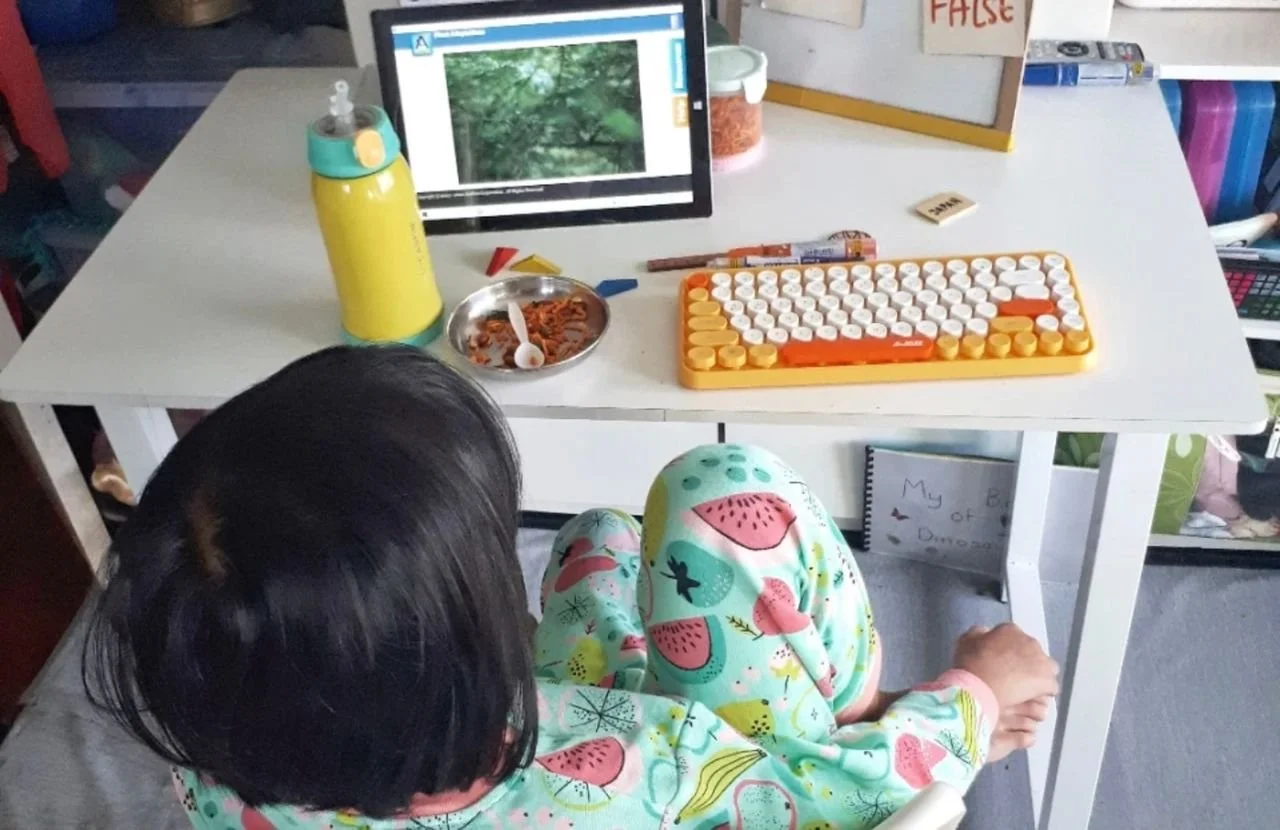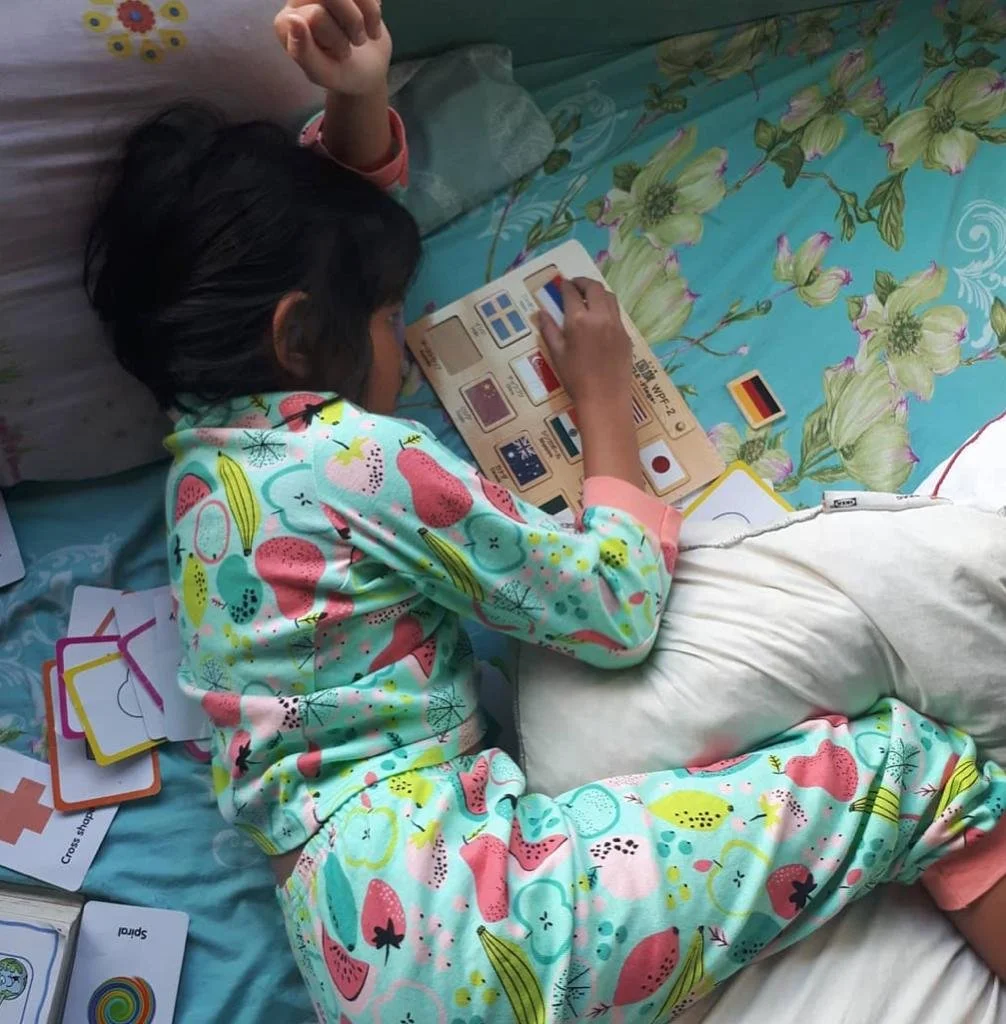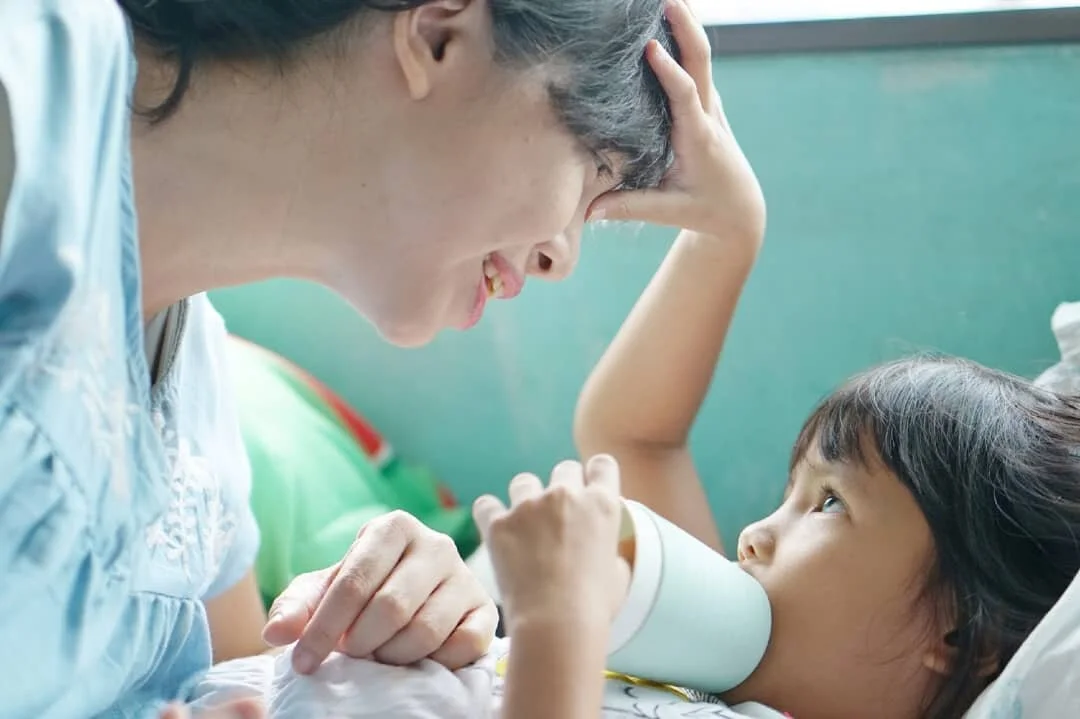By Shao L Salimzi

Image source: Story of A Little Star
This was first published on Shao’s Blog, here called Story of A Little Star.
Year 2020 may have been the year of the pandemic. For us, however, it has been the year of homeschool success. We have been homeschooling our ASD child part-time for many years. Since the age of 4.5, Little Star attended a special needs school that only had classes twice a week. It was an ideal set up at the time, enabling us to run an extensive home-based play therapy programme.
However, the pandemic changed everything. Her school went fully online, and changes in school management meant her classes dwindled to once a week. She received a list of weekly activities instead of regular lessons.
And I found, we were okay! I also believed strongly that she could do so much more than what the school provided. Our home-based play-based Son-Rise programme that focused on social-communication goals was already established. Fine / gross motor and sensory enrichement were integrated. So all I needed was to find a resource for academic support. Our full-time homeschool programme was born. And Little Star met the much more challenging curriculum head-on.
Here is an example. In school, she only did counting and giving counters of up to 10. At home, she has been whizzing past math, going through addition, subtraction, fractions, measurements and patterns. Through our facilitated / adapted reading methods, Little Star is reading longer stories, watching 5-10 minute educational videos on a wide range of topics, from reindeer and food chains to physical matter. She shows me that she fully comprehends and understands the material through our Q&A sessions after. Truly her comprehension astounds me because it sometimes does not look like she is paying attention. When really she is taking it all in. To the point that am now exploring deeper, less literal questions, because the literal ones seem too easy for her. Am also learning so much about her. That she likes her science and engineering subjects and loathes the music one.
And when I ask her if she enjoys all the learning material, her response is, “YES”. This feeds my deep belief that all children enjoy learning, even if they have special needs, as long as it is adapted and supportive of those needs.
So here our tips for special needs homeschooling success, from our home to yours!

Little Star’s Homeschool Setup
5 Tips for Special Needs Homeschooling Success
-
Pajamas. We definitely subscribe to the homeschooling in pajamas movement! But really, any kind of comfortable, cozy wear will do. Our pajama mornings symbolise an easy start to our day, with minimal control battles. This means easy transitions from waking up to Star’s internal clock, breakfast, washing up and getting ready for homeschool. Since getting dressed in the mornings can sometimes be a control battle, we let that go and learn in our PJs!
-
Munchies. I’ll tell you our not-so-little secret. SNACKS. When we bring out her favourite snack, muruku (a kind of savoury, crispy cracker), Star knows it’s time for the learning to start. We get settled at the table and ready for school. So instead of dreading transitions, we figure out ways to make them fun for our special child.
-
Ism / fidget toy. Sometimes it is not that the child does not want to pay attention. They may actually find it physically challenging to sit still in one place for long periods of time. If you have a child with ADHD, ADD or autism, you will know what I mean. So we always have small fidget items at the table for her. Often, Star will bring her own ism toy as well. As long as the toy is not a huge distraction but rather aids in her concentration, we accomodate it.
-
Choice Board and Letter Board. Our girl is verbal, but she mainly uses language to get what she wants. Not so much for lessons. And that is okay. For children with special needs, speaking can be difficult. We are comfortable with Star using it selectively for what she considers important. For lessons, we use choice boards and letter boards to facilitate communication. This is derived from the Rapid Prompting Method developed by Soma Mukhopadhyay. After trying numerous communication strategies (including PECS and assistive tech devices), we find the simplest method works the best. We have adapted the RPM tools somewhat to be more eco- and budget-friendly, as well as communication friendly, but the foundational method is the same. You can find out more about RPM at Soma’s website.
-
Tab / laptop / keyboard. We follow an online curiculum for academics, so gadgets are a necessity. Saying that, they are not our entire homeschool programme. Too much electronic devices can be harmful for our kids, neurodivergent or neurotypical, accourding to the Adolescent Brain Cognitive Development (ABCD) study. We limit our online learning to less than an hour a day. However, ASD kids can be obsessive about their gadgets. To manage that, we do school on a laptop or tab that she only uses for academics. Everything that she could possibly want to play with is disabled or unistalled from that computer. This removes the control battle over gadgets during school time, allowing learning to go so much smoother.
These 5 tips for homeschooling success really helps see us through our learning goals and keep things easy and light. They are not the end all though. We use many more strategies to engage Little Star in our day-long play and homeschool programme. From appealing screen-free activities, respecting when she wants to participate (or not), switching it up when she has an off day to more Son-Rise techniques like using her motivations and being encouraging.




 Shao
Shao

